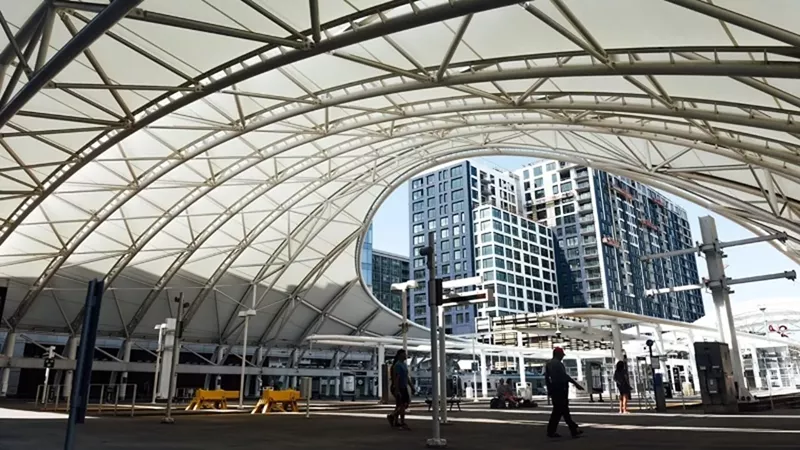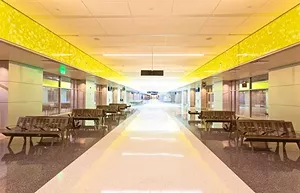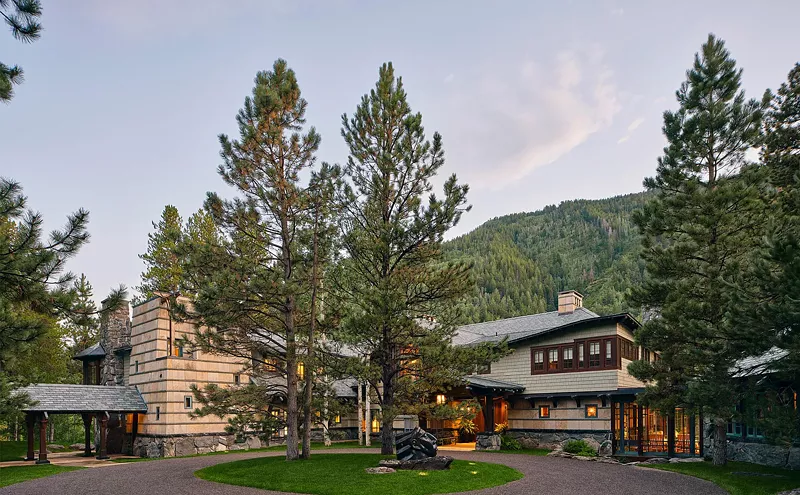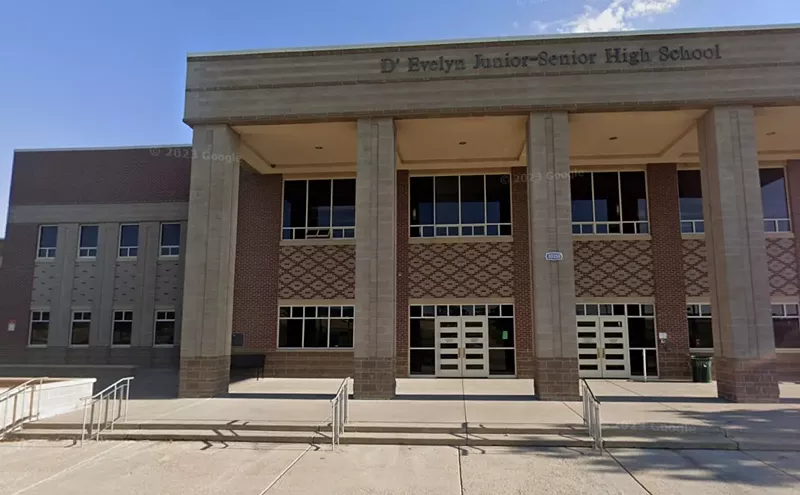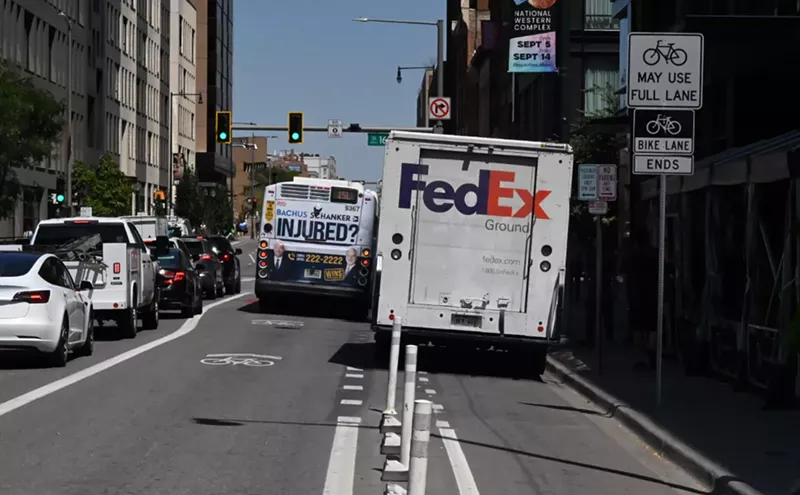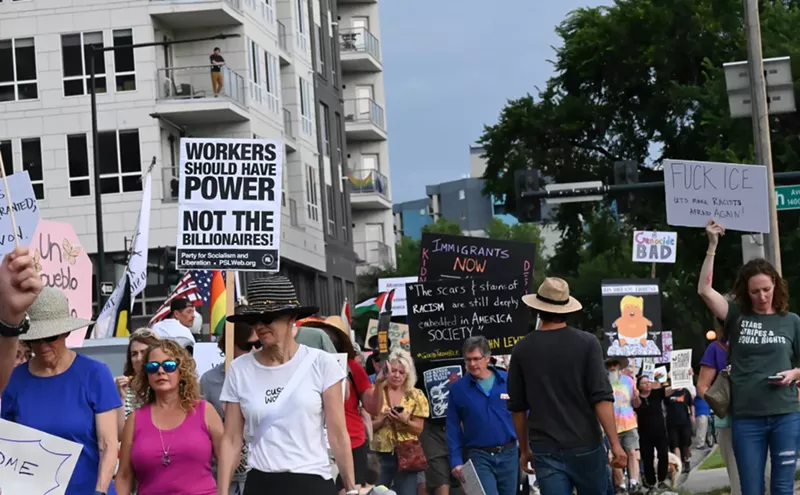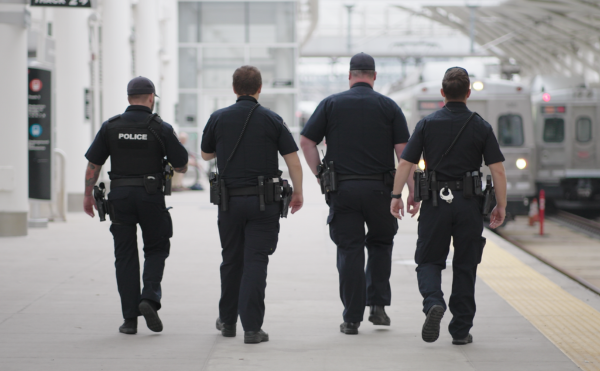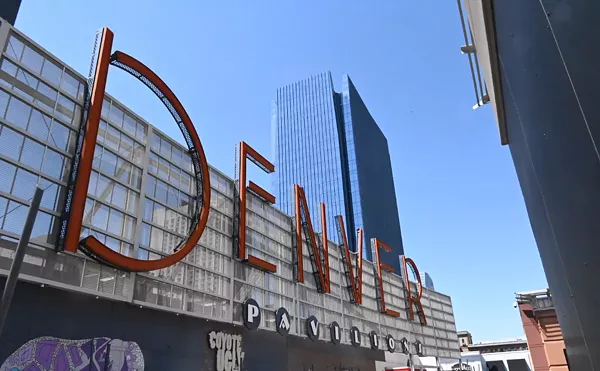Since undergoing a $54 million renovation and grand reopening in 2014, Denver Union Station has served as the bustling heart of downtown travel and commerce. Thirty-thousand visitors pass through daily to visit the luxurious Crawford Hotel as well as high-end restaurants and retail shops located beneath the iconic neon-red letters illuminating the station’s ground floor. However, there is another side to Union Station – a literal underbelly – that inspires considerably less awe than the grand structure above.
The Regional Transit District's underground bus terminals, located beneath the Wewatta and Chestnut Pavilions on the east and west sides of Union Station, respectively, have become a sheltering location for many of the city’s residents struggling with homelessness, substance-use disorder and untreated mental illness. Now, travelers complain that they are afraid to traverse down the pavilion escalators into the confined bus depot because they may encounter open-air drug use, untreated mental-health crises or even violence. All the while, the upper level of Union Station remains a vibrant tourist destination.
How did these two sides of Union Station — the façade and the reality — come to co-exist?
Of the more than 10,000 unhoused individuals living in Denver, nearly a quarter endure the brutal reality of being unsheltered. The city and local nonprofit organizations operate a limited number of emergency shelters, which often run full, as well as transitional housing programs, many with waitlists on the order of years. For a multitude of reasons, including the economic impact of the COVID-19 pandemic and high housing costs, Denver continues to experience increasing rates of homelessness. This, in addition to the overdose crisis, has created the perfect environment for a growing public-health crisis that is straining the already fraying fabric of our city’s social safety net and forcing an ever-greater number of people to seek survival in public spaces.
Meanwhile, May 2022 marked the ten-year anniversary of Denver’s unauthorized camping ban. While there was some leniency of this anti-homeless ordinance during the initial waves of the COVID-19 pandemic, enforcement is now back on in full force. For example, last year city officials shuttered Civic Center Park, which had gradually become a de facto outdoor camping space and area for centralization of outreach efforts. As a result, the community of people gathered there was continually displaced around the city until they ultimately landed at Union Station.
Union Station is a sensible place for people experiencing homelessness to congregate because of all it has to offer — public restrooms, access to places to charge phones and other devices and, most important, protection from the elements and four walls that lend a sense of relative safety. But over the past year, RTD and Denver police have increased their presence around and inside Union Station in a widely publicized effort to “clean it up.”
In February, the Denver Police Department conducted a large-scale sweep of Union Station that resulted in 43 arrests, most for low-level drug or paraphernalia possession. Under new leadership, RTD’s police force has announced plans to even further expand their presence and visibility around Union Station to deter drug use and restore public order. But this inpouring of expensive law enforcement resources does little to address the underlying causes of disorder affecting Union Station — largely homelessness and untreated substance-use disorder — and has only led to more traumatization and violence among the people sheltering there.
There are those who believe a different approach — a public-health approach — is necessary. A group of doctors, nurses and outreach workers from several nonprofit agencies conduct street outreach on a weekly basis to homeless encampments around Denver. Since the homeless population sheltering inside Union Station has grown, these providers have been taking their medical skills and equipment to the lower bus terminal, where they offer care for acute issues like skin infections and wounds as well as chronic issues like heart disease and diabetes. If a basement bus terminal sounds like a less-than-ideal environment for doctors, nurses and volunteers to be providing sometimes lifesaving medical care — it is. Surely, they would rather be treating patients in well-equipped and private spaces rather than out of a backpack. They go see patients at Union Station because right now, that is where patients need the most help.
More law enforcement resources will not solve a public-health problem rooted in homelessness. We need to support efforts to invest in long-term solutions — affordable transitional housing, robust community-based mental health services and equitable educational and career opportunities — so that Union Station, or somewhere else like it, won’t have to be the “last stop” for people who have fallen through every other crack. Until then, people experiencing homelessness will continue to exist in public spaces, and so will the medical providers and volunteers dedicated to caring for them.
While Denver officials bear much of the responsibility for taking action to address the homelessness crisis, ordinary citizens have an important role to play, too. Residents of Denver must acknowledge that Union Station is part of a growing public-health problem in our city. And the thing about a public-health problem is this: It might not directly affect you. You might not shop at Union Station or travel by bus, so you might think what goes on in the lower terminal doesn’t impact your life much in one way or another. But, at the very least, each avoidable hospitalization caused by a lack of clean and safe housing costs the city taxpayer dollars — your dollars. Every incarceration resulting from increased police presence, too.
What is happening in the lower terminal of Union Station affects us all, because the "public" in public health is made up of individuals like us, and we as individuals are connected through the shared benefits and obligations of society. Public health is not solely the responsibility of health researchers, medical professionals or city officials; it is the responsibility of every person who participates in that shared society. We must all recognize homelessness as the public-health crisis that it is, and advocate for investing in long-term solutions to alleviate the pressures placed on Union Station.
Samantha Sills, MPH epidemiology, is a research assistant in General Internal Medicine, Anschutz Medical Campus. She wants to thank Dr. Sarah Axelrath for allowing her the opportunity to shadow, as well as for reviewing and editing this piece.
Westword.com frequently publishes op-eds and essays on matters of interest to the Denver community on weekend. Have one you'd like to share? Send it to [email protected], where you can also comment on this piece.

Audio By Carbonatix
[
{
"name": "GPT - Billboard - Slot Inline - Content - Labeled - No Desktop",
"component": "23668565",
"insertPoint": "2",
"requiredCountToDisplay": "2"
},{
"name": "STN Player - Float - Mobile Only ",
"component": "23853568",
"insertPoint": "2",
"requiredCountToDisplay": "2"
},{
"name": "Editor Picks",
"component": "17242653",
"insertPoint": "4",
"requiredCountToDisplay": "1"
},{
"name": "Inline Links",
"component": "18838239",
"insertPoint": "8th",
"startingPoint": 8,
"requiredCountToDisplay": "7",
"maxInsertions": 25
},{
"name": "GPT - 2x Rectangles Desktop, Tower on Mobile - Labeled",
"component": "24956856",
"insertPoint": "8th",
"startingPoint": 8,
"requiredCountToDisplay": "7",
"maxInsertions": 25
},{
"name": "Inline Links",
"component": "18838239",
"insertPoint": "8th",
"startingPoint": 12,
"requiredCountToDisplay": "11",
"maxInsertions": 25
},{
"name": "GPT - Leaderboard to Tower - Slot Auto-select - Labeled",
"component": "17676724",
"insertPoint": "8th",
"startingPoint": 12,
"requiredCountToDisplay": "11",
"maxInsertions": 25
}
]

